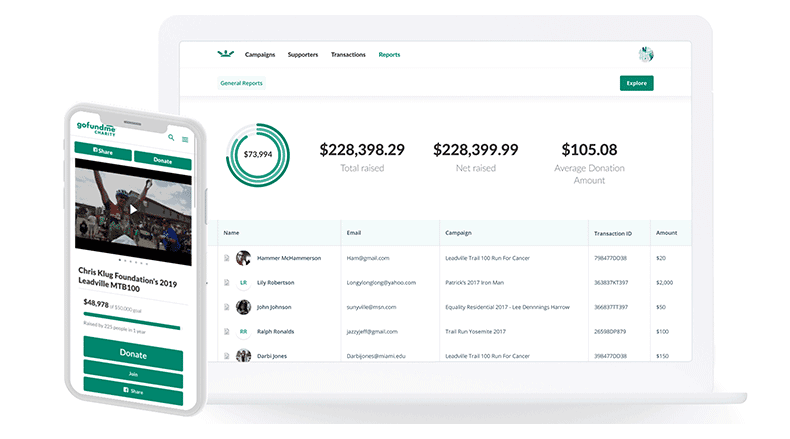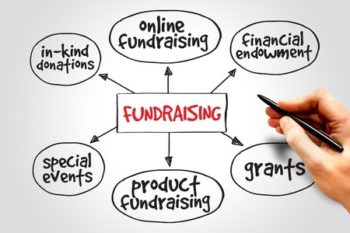Online Fundraising: Effective Digital Campaigns for Nonprofit Success
Online Fundraising: Effective Digital Campaigns for Nonprofit Success
Blog Article
The Function of Community Engagement in Nonprofit Fundraising: Building Lasting Relationships for Sustainable Support
Neighborhood engagement is progressively acknowledged as a critical part of effective not-for-profit fundraising. By cultivating real connections with regional stakeholders, organizations can cultivate trust and loyalty, which are vital for lasting assistance. Nevertheless, the approaches and approaches used to involve areas vary widely, raising important questions concerning performance and influence. What are the ideal methods for cultivating these vital connections, and how can nonprofits measure their success in this sector? Recognizing these dynamics could significantly affect the future of fundraising initiatives and the general mission of not-for-profit organizations.
Recognizing Community Interaction
Community interaction is a crucial element of effective not-for-profit fundraising initiatives. Nonprofits need to recognize vital stakeholders-- such as community participants, local companies, and other organizations-- to create effective engagement strategies.
Effective community involvement is based on active listening and responsiveness to the requirements and rate of interests of the community. This process involves getting feedback, understanding area dynamics, and guaranteeing that the organization's mission straightens with local top priorities. Engaging the community can take numerous types, including public conferences, volunteer possibilities, and collaboration efforts, each designed to urge involvement and investment in the company's objectives.
Moreover, community engagement must be approached as an ongoing discussion rather than a single effort. By cultivating an inclusive environment where area voices are heard and valued, nonprofits can construct a strong structure for future fundraising ventures. Ultimately, a deep understanding of neighborhood engagement equips organizations to produce genuine connections that improve their total efficiency and sustainability.
Advantages of Strong Relationships
Solid relationships developed through neighborhood involvement yield countless benefits for not-for-profit fundraising initiatives. Firstly, these partnerships foster trust and trustworthiness, vital parts in encouraging contributors to add. When possible supporters see a nonprofit proactively involved in their community, they are a lot more most likely to believe in its objective and effect.

Moreover, these partnerships promote effective interaction. Nonprofits can utilize their links to share tales of impact, updates, and requires, ensuring that advocates continue to be informed and involved. This open line of interaction not just reinforces bonds but likewise urges word-of-mouth promotion, increasing the not-for-profit's reach.
Last but not least, solid community connections can bring in brand-new partners and sponsors. People and businesses are a lot more likely to straighten with companies that demonstrate meaningful neighborhood participation, giving additional resources and support that can substantially boost fundraising capabilities. Thus, growing durable partnerships via community interaction is important to a not-for-profit's long-lasting fundraising success.
Methods for Efficient Engagement
Just how can nonprofits efficiently involve their communities to improve fundraising efforts? Regular updates, engaging material, and calls-to-action can galvanize community rate of interest and engagement.
Second, holding area events, such as workshops, volunteer chances, or fundraising drives, assists in in person communication, allowing nonprofits to showcase their effect and initiatives. These occasions not just raise funds but likewise grow partnerships and allow community members to engage straight with the reason.
Third, applying personalized communication methods can boost involvement. Customizing messages to specific contributor sections based upon rate of interests and previous payments cultivates a feeling of belonging and financial investment in the company's goal.
Lastly, developing partnerships with local companies and neighborhood leaders can magnify outreach initiatives. Collective campaigns can improve exposure and reputation, showing a cumulative dedication to the neighborhood's wellness. By integrating these strategies, nonprofits can construct long-term partnerships that improve fundraising efforts and drive sustainable original site assistance.
Gauging Interaction Success
While engaging the community is essential for successful not-for-profit fundraising, gauging the efficiency of these interaction efforts is equally important. Developing clear metrics enables organizations to analyze just how well they are linking with their audience and attaining their fundraising goals. Key efficiency indicators (KPIs) such as benefactor retention prices, volunteer involvement levels, and involvement on social networks platforms give concrete data for analysis.

Frequently evaluating these metrics makes it possible for organizations to pivot their approaches when needed, making sure that community involvement stays aligned with their total mission. In addition, sharing these outcomes with stakeholders fosters openness and builds trust fund, encouraging more community participation. Ultimately, a durable measurement framework not just notifies future fundraising campaigns but additionally strengthens the partnership between the nonprofit and its fans, preparing for lasting success.
Case Researches in Community Effect
Numerous situation researches show the extensive impact that neighborhood involvement can have on not-for-profit fundraising success. One notable instance is the "Food for Idea" effort, where a neighborhood food financial institution partnered with schools and companies to host community dinners. These events not just raised funds but also fostered a sense of belonging amongst individuals, considerably boosting benefactor retention prices.
Another compelling situation is the "Eco-friendly Spaces Job," which included regional citizens in the revitalization of city parks. This campaign not just amassed financial support from regional services however additionally grew a volunteer base that added to recurring upkeep and shows. The sense of ownership and pride among community members converted right into continual payments.
In the realm of arts, the "Art for All" campaign successfully engaged neighborhood musicians and clients to develop collective art setups, resulting in enhanced visibility and contributions for a neighborhood arts not-for-profit.
These examples highlight that when nonprofits prioritize area involvement, they can develop long-term connections that improve fundraising efforts, ensuring lasting assistance and promoting a vivid area culture. Such situations show that community involvement is not just a method however a necessary pillar of nonprofit success.
Verdict
Finally, community involvement is essential to the success of nonprofit fundraising initiatives. By fostering solid connections with regional stakeholders, organizations boost count on and trustworthiness, leading to boosted donor retention and commitment. Implementing effective interaction strategies and determining their influence guarantees that nonprofits can adjust and flourish. Eventually, a durable foundation of neighborhood assistance not only magnifies fundraising possible but likewise grows a culture of cooperation, vital for attaining long-term organizational objectives and maintaining meaningful impact.
Nonprofits must identify essential stakeholders-- such as community members, local companies, and other organizations-- to create effective engagement strategies.

In conclusion, community interaction is important to the success of not-for-profit fundraising initiatives.
Report this page